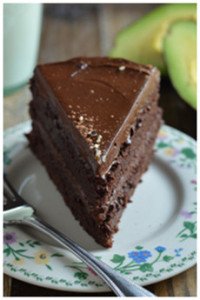AUGUST 2014
A HEALTHY LYMPHATIC SYSTEM FOR A HEALTHY YOU
The key to improving your body’s immune function is to nourish your lymphatic system. Sometimes referred to as the body’s secondary circulatory system, the lymphatic system carries away toxins and metabolic waste from the body’s tissues. The lymphatic system is made up of lymph vessels, lymph nodes, tonsils, spleen and the thymus gland. It helps regulate tissue pressure, immune functions and fat absorption in the intestine. If your lymphatic system is not healthy, toxins can build up and result in lower immune function. Here are 5 tips to help you care for your lymphatic system.
1. Eat potassium-rich foods. Your lymphatic system thrives on potassium-rich foods. Dark leafy greens, broccoli and bananas are some excellent choices to consider.
2. Reduce toxins. Additives and preservatives cause swelling and fluid retention. One such additive, monosodium glutamate, better known as MSG, is often disguised among other ingredients and can have degenerative and deadly effects on the brain and nervous system. Watch out for hydrolyzed anything, autolyzed anything, natural flavor, seasonings and spices, commercial soup or sauce bases, bouillon, broth and stock, gelatin and even aluminum cookware. All these can introduce toxins to your body that cause your lymphatic system to work overtime.The best way to avoid these is to simply get back to the basics and use all natural, unprocessed ingredients in your cooking.

3. Exercise…breathe. It is no secret that exercise is good for you, but did you know that even light exercise can benefit circulation of both your blood and lymph? Your lymphatic system relies on muscle movements to keep lymph moving through its vessels. Even light exercise such as standing calf raises or a walk around the neighborhood will stretch and contract your muscles, triggering the circulatory function within your lymphatic system. Moreover, deep breathing, which is often recommended as a technique for stress relief and boosting blood circulation, will also help release toxins and increase lymphatic circulation.
4. Skin brushing. Dry skin brushing increases blood and lymph circulation and boosts organ function by stimulating sweat glands and opening pores. It also softens skin and improves the complexion. On dry skin, before bathing, brush with a natural bristle brush gently over the skin. Start with your extremities and work your way to the center of your body, avoiding your face, always moving in the direction of the heart.
5. Lymphatic massage. This therapeutic massage technique, also known as lymphatic drainage, uses gentle kneading motions to stimulate muscles and in effect, lymphatic vessels and flow. Just as with skin brushing, the motion should always be towards the heart (lymph openings). You can do this yourself or ask your naturopathic doctor about arranging for this therapy – whether they do this in office or have someone to refer. We discuss this in greater detail in article below.

References
Support the Lymphatic System – Your Secondary Circulatory System, Gloria Gilbère, N.D.,D.A.Hom., Ph.D. American Holistic Health Association.
Lymph Flow Dynamics in Exercising Human Skeletal Muscle as Detected by Scintography. Journal of Physiology (1997), 504.1, pp.233-239.
Pizzorno, J. E., & Murray, M. T. (1999). Textbook of Natural Medicine. Edinburgh: Churchill Livingstone.
Hudson, A. (2001). Lymphatic Drainage: Therapy I. Castlecrag, N.S.W: Triam Press.
Photo Credit: Yourgenesis.com
BEETS

References
Beets. The World’s Healthiest Foods.
CHOCOLATE BEET CAKE WITH CHOCOLATE AVOCADO FROSTING
Hands-on time: 1 hour. Cook time: 1 hour 45 minutes. Total time: 2 hours 45 minutes. Yields: an 8-inch 2-layer cake with about 1.5 cups of frosting.
Cake
- 2 medium beets
- 2 cups plain unsweetened almond milk
- 1 tbsp cream of tartar
- 1.5 cups raw turbinado sugar (or substitute cane sugar)
- 1/2 cup melted virgin coconut oil
- 1 tbsp vanilla extract
- 1.5 cups oat flour
- 3/4 cup almond meal
- 1 cup unsweetened cocoa powder
- 2 tsp baking soda
- 1 tsp baking powder
- pinch of Himalayan sea salt

- 2 ripe avocados, halved and pitted
- 1/2 cup unsweetened cocoa powder
- 1/2 cup maple syrup
- 2 tbsp melted virgin coconut oil
- 1/2 tsp vanilla extract
- few pinches Himalayan sea salt
Begin with roasting your beets. To do this, preheat oven to 400 degrees, chop the stems and tips (if they are long) off your beets and scrub the beets clean. Next, wrap the beets in foil and roast them in the oven until a fork can slide easily to the center of the beet. This should take roughly 60 to 75 minutes. When they’re ready, remove the foil pack, unwrap and set it aside until it is cool enough to handle. Go ahead and lower your oven temperature to 350 degrees if you are planning to make your cake as soon as the beets have cooled.
Once the beets have cooled, push off the skins and cut the beets into chunks. Next, puree them using a food processor, scraping down the sides as necessary. Add a little water if the beets aren’t easily pureed. Scoop out 1 cup of puree for this recipe – the rest is leftover.
For a double layer cake, prepare two eight-inch pans with a coat of a high heat oil, such as coconut or sunflower oil. Trace the bottom of the pan onto a piece of parchment paper and cut it out, then use it to line the bottom of the pan. Do this for both pans, coat them again and set them aside. (For a single layer cake, prepare one nine-inch pan the same way.)
To prepare your cake batter, whisk together almond milk and cream of tartar in a large bowl and let it sit for about five minutes, to curdle. Add beet puree, sugar, coconut oil and vanilla extract, then use a hand or stand mixer to beat the mixture until it is foamy. Sift in the remaining dry ingredients and mix it again.
Divide the mixture between the two cake pans and bake at 350 degrees for about 30 to 35 minutes, or until the toothpick test of the center of the cake comes out with fudgy crumbs. Remove the cake layers and let them cool completely in the pans on wire racks. Once at room temperature put the pans in the fridge to cool a bit more. After the cakes have cooled thoroughly, run a knife around the inside edge of the cake pan, then carefully turn the pan over to remove the cake and peel off the parchment paper.
To make the frosting, scoop out flesh of avocados and use a food processor to puree them until smooth. Add the remaining ingredients and puree again, scraping down the sides of bowl as needed.
Next, assemble the cake by placing the first layer on your cake stand or serving plate. If the top is uneven, carefully even it off with a knife. Smooth about half of the frosting onto the top of the first layer, then top it with the second cake layer and smooth on the remaining frosting. Decorate and serve!
References
Fudgy Chocolate Beet Cake with Chocolate Avocado Frosting (Vegan and GF). Coffee & Quinoa.
ELECTROLYTES

Not all coconut water is created the same. Make sure to read the ingredients and check which preservatives are used. Some of our favorite coconut water includes the brands Chi, 100% Raw Coconut Water and Unoco Raw Coconut Water. They are more expensive but lack the preservatives used in other brands.
References
Photo Credit. FreeDigitalPhotos.net.
Fluid and electrolyte balance. MedlinePlus.
CLEAVERS (GALIUM APARINE)

References
Photo Credit. “20140618Galium aparine” by AnRo0002 – Own work. Licensed under Creative Commons Zero, Public Domain Dedication via Wikimedia Commons.
Galium aparine. NDHealthFacts.org.
Cleavers (Galium aparine). Natural Standard.
Mills, S., & Bone, K. (2000). Principles and Practice of Phytotherapy: Modern herbal medicine. Edinburgh: Churchill Livingstone
LYMPHATIC DRAINAGE MASSAGE


Chart: Click Here
Photo Credit. FreeDigitalPhotos.net.
Lymph Drainage for Detoxification. MassageTherapy.com.
Pizzorno, J. E., & Murray, M. T. (1999). Textbook of Natural Medicine. Edinburgh: Churchill Livingstone.
Hudson, A. (2001). Lymphatic drainage: Therapy I. Castlecrag, N.S.W: Triam Press.Photo Credit: Lymphatic Drainage Chart. Real Body Work.
The information offered by this newsletter is presented for educational purposes. Nothing contained within should be construed as nor is intended to be used for medical diagnosis or treatment. This information should not be used in place of the advice of your physician or other qualified health care provider. Always consult with your physician or other qualified health care provider before embarking on a new treatment, diet or fitness program. You should never disregard medical advice or delay in seeking it because of any information contained within this newsletter.
Follow us on instagram
BLOG
Become an educated consumer with our Indigo Blogs and prevent dis-ease.
Our Doctors have been featured in:









